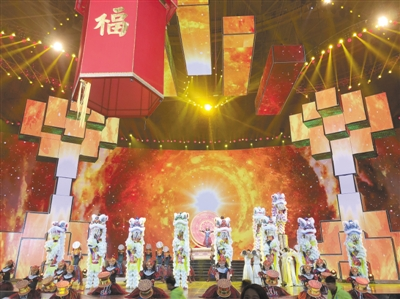Home> Top News
Suixi Lion Dance stands out at int'l film festival
Updated: 2017-12-05
The 600-year-old Suixi-style lion dance was a highlight among the performances showcased at the closing ceremony of the fourth Silk Road International Film Festival held in Fuzhou, capital of Fujian, on Dec 3.
Hosted by the State Administration of Press, Publication, Radio, Film and Television and the Fujian and Shaanxi provincial governments, the six-day event featured more than 103 films from 42 countries along the Belt & Road. Discussion forums were held with foreign and domestic celebrities.
Zhanjiang is a pivot city along the Belt & Road. In the past it was the point of origin of Chinese trade along the Maritime Silk Road during the Western Han Dynasty (206 BC-AD 24), and today it is China's opening portal to the Association of Southeast Asian Nations (ASEAN).
|
|
|
A Suixi-style lion dance is performed at the closing ceremony of the fourth Silk Road International Film Festival. [Photo by Li Zhi/Zhanjiang Daily] |
In recent years, it has made great strides in integrating itself into the world with frequent economic, cultural, educational and sports communication and activities. Emerging as a rising international logistics and aviation city, it has attracted more and more attention from both home and abroad.
For that cultural reason, the Longwan Lion Dance Troupe of Suixi county was invited by the organizing committee to take part in the festival. Ten fluorescent "lions" made by local craftsmen danced on the international stage as a demonstration of the charm of Zhanjiang folk arts, said Li Rongzai, head of the troupe.
Suixi-style lion dancing, which originated in the Ming (1368-1644) and Qing Dynasties (1644-1911) in Zhanjiang, is a form of traditional dance in which performers mimic a lion's movements with lifts, or balancing on high stakes. Believed to be capable of exorcising demons and bringing good luck, it's usually performed during traditional Chinese festivals or religious ceremonies.

